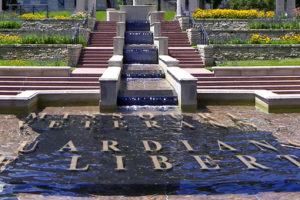The Importance of Wayfinding Planning Committees for Hospitals
Medical Construction & Design’s (MCD) September/October 2011 edition featured a good wayfinding and signage article. If you are a frequent reader of Conversations about Signage, you know that we have talked about the importance of a well-planned and easy to understand architectural signage and wayfinding program.
Most healthcare facilities face unique challenges ranging from the construction of their facility to the demographic they serve. This results in the need for a strategic evaluation of a proper architectural signage and wayfinding program, which could include interior signage, exterior signage, digital signage or a combination of all three.

To achieve a wayfinding solution that will work, facility managers and administrators should organize a planning committee that includes representatives from the architect, the designer, the signage company, the nursing staff, and the maintenance team. A committee can help identify traffic patterns, assess daily informational challenges, identify future growth plans and outline the wayfinding program maintenance needs. Once a plan is outlined, a set of standards can be created that will serve as the guidelines for the hospital’s wayfinding plan and the branded signage solution for the present and the future.
The bottom line is making sure the program communicates a simple and understandable message that minimizes confusion and anxiety for visitors and patients. A good example of this would be the utilization of universal healthcare symbols which impacts ADA signage and universal design.
Hospital funding can be impacted by patient satisfaction, so a proper signage and wayfinding program can certainly help contribute to an enhanced patient experience. For example, many hospitals are turning to digital signage to promote hospital services, educate patients on applicable information to help reduce perceived waiting times.
In the MCD article Sign of the Times by Mark VanerKlipp, research was conducted supporting wayfinding standards for healthcare institutions. For one client, wayfinding research concluded:
- 30% of first-time visitors and 15% of repeat visitors reported confusion
- 40% reported idle staff when patients are late
- Average 2-4 minutes per interaction of staff time to provide directions to lost individuals
- 25% of staff members cannot find some destination within the hospital
- 28% reported creating their own workarounds to compensate for the weaknesses of the existing wayfinding system.


1 Comment
Leave your reply.